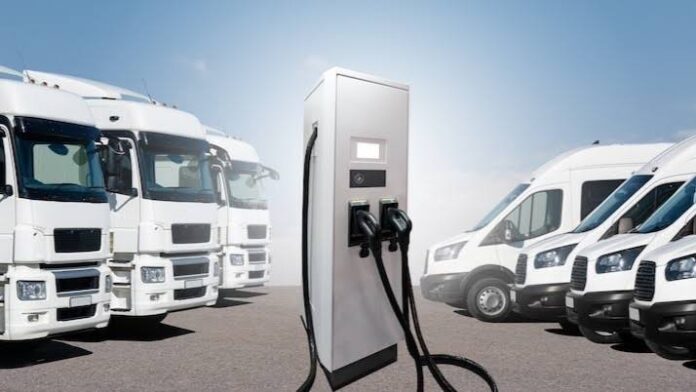Introduction to Fleet Electrification
Fleet electrification represents a transformative shift in transportation, combining technological advancements with the growing need for sustainable practices. Transitioning to electric vehicles (EVs) in fleet operations can significantly reduce carbon emissions, lower operating costs, and comply with evolving environmental regulations. However, this shift requires careful planning and consideration of vehicle types, operational demands, and infrastructure needs to ensure a seamless transition.
A critical component of this transition is the implementation of robust fleet charging solutions. The solutions should be customized to meet the specific requirements of fleet operators, taking into account aspects such as charging speed, scalability, and energy efficiency. Creating a cohesive charging infrastructure can enhance fleet effectiveness, minimize downtime, and contribute to long-term sustainability objectives.
Benefits of Electric Fleets
At the heart of electric fleet adoption are its substantial benefits. Environmentally, electric vehicles (EVs) represent a leap forward by eliminating tailpipe emissions, contributing to cleaner air, and significantly reducing overall carbon footprints. This corresponds with international initiatives addressing climate change and encouraging sustainable development. Financially, electric fleets offer reduced energy costs, as electricity costs can be much lower and more stable than fluctuating fossil fuel prices. Furthermore, EVs have fewer mechanical components, resulting in lower maintenance costs and longer vehicle lifetimes. This translates to more significant savings and reliability for fleet operators. The potential for enhanced operational efficiency through electric fleets is vast, especially with intelligent fleet management technologies.
Overcoming Challenges in Electrification
Transitioning to an electric fleet comes with its challenges, the most notable being the initial financial outlay required for purchasing electric vehicles. This can be daunting for many companies, especially small to medium-sized enterprises. However, the long-term savings often outweigh these upfront costs. Another issue is range anxiety, a concern regarding whether an electric vehicle can cover the required distance on a single charge. Addressing this involves adopting cars with longer ranges and ensuring comprehensive route planning. Additionally, fleet operations may require a cultural shift, as mechanics and drivers must be retrained to handle EVs. This poses both a challenge and a chance to cultivate a more informed workforce skilled in handling advanced automotive technologies.
Importance of Charging Infrastructure
A well-established charging infrastructure is pivotal for the widespread adoption of electric fleets. It provides the necessary support for routine operations and alleviates various concerns. The development of charging stations, both public and private, is critical. Many governments and private sector players invest heavily in this area, ensuring that charging solutions are accessible and convenient. Comprehensive charging solutions are becoming increasingly sophisticated, integrating with innovative grid technologies to optimize energy use and improve efficiency. Strong infrastructure development meets current needs and prepares for future growth of electric vehicle usage.
Technological Innovations in Fleet Management
Fleet management is transforming as technological innovations pave the way for electrification. With advancements in telematics, fleet managers can monitor electric vehicle (EV) performance, charging schedules, and energy consumption in real time, ensuring efficiency and cost-effectiveness. Predictive analytics tools optimize routes based on battery range and charging infrastructure availability, minimizing downtime. These technologies empower fleet operators to transition smoothly, addressing challenges like range anxiety and charging logistics.
Furthermore, integrating AI and IoT in fleet electrification is revolutionizing predictive maintenance. Intelligent sensors detect potential issues before breakdowns occur, reducing repair costs and extending vehicle lifespans. By embracing these innovations, companies enhance operational efficiency and contribute to a greener future, aligning with sustainability goals and regulatory mandates.
Policy and Regulatory Landscape
National policies and incentives are shaping the course of fleet electrification by providing financial subsidies, tax credits, and grants for adopting electric vehicles. These incentives are crucial for offsetting the higher initial costs of EVs. Additionally, balancing regulatory frameworks requires fleet operators to cut emissions, hold them accountable for their carbon footprints, and make adopting electric fleets attractive. As global frameworks become more stringent, there will be increased impetus for fleet managers to future-proof their operations through electrification.
Case Studies of Successful Electrification
Real-world examples from leading cities and companies provide insights into the practicalities of fleet electrification. For instance, Oslo’s ambition to become a ‘zero-emission city’ by 2025 has led to significant investments in electric public transport, serving as a blueprint for others. Logistics giants like FedEx are electrifying their delivery fleets in the corporate world, demonstrating the operational benefits and public perception advantages of sustainable practices. These cases underscore the viability and advantages of electrifying fleets, highlighting success strategies and the tangible impacts on operational efficiency and environmental goals.
The Future of Fleet Electrification
Looking ahead, the future of fleet electrification is promising, driven by continuous technological advancements and societal shifts towards sustainability. As infrastructure becomes more pervasive and technologies more refined, the barriers to adoption will diminish. Collaborative efforts among governments, corporations, and communities are fundamental to achieving broad-scale electrification. Such alliances can accelerate technological advancements, infrastructure developments, and policy adaptations necessary for this transition. Embracing electric fleets is more than an option—it’s becoming a compelling necessity in meeting environmental targets and enhancing operational efficiency. The journey towards electrification may be complex, but it is undoubtedly leading us toward a brighter, more sustainable future for transportation.
